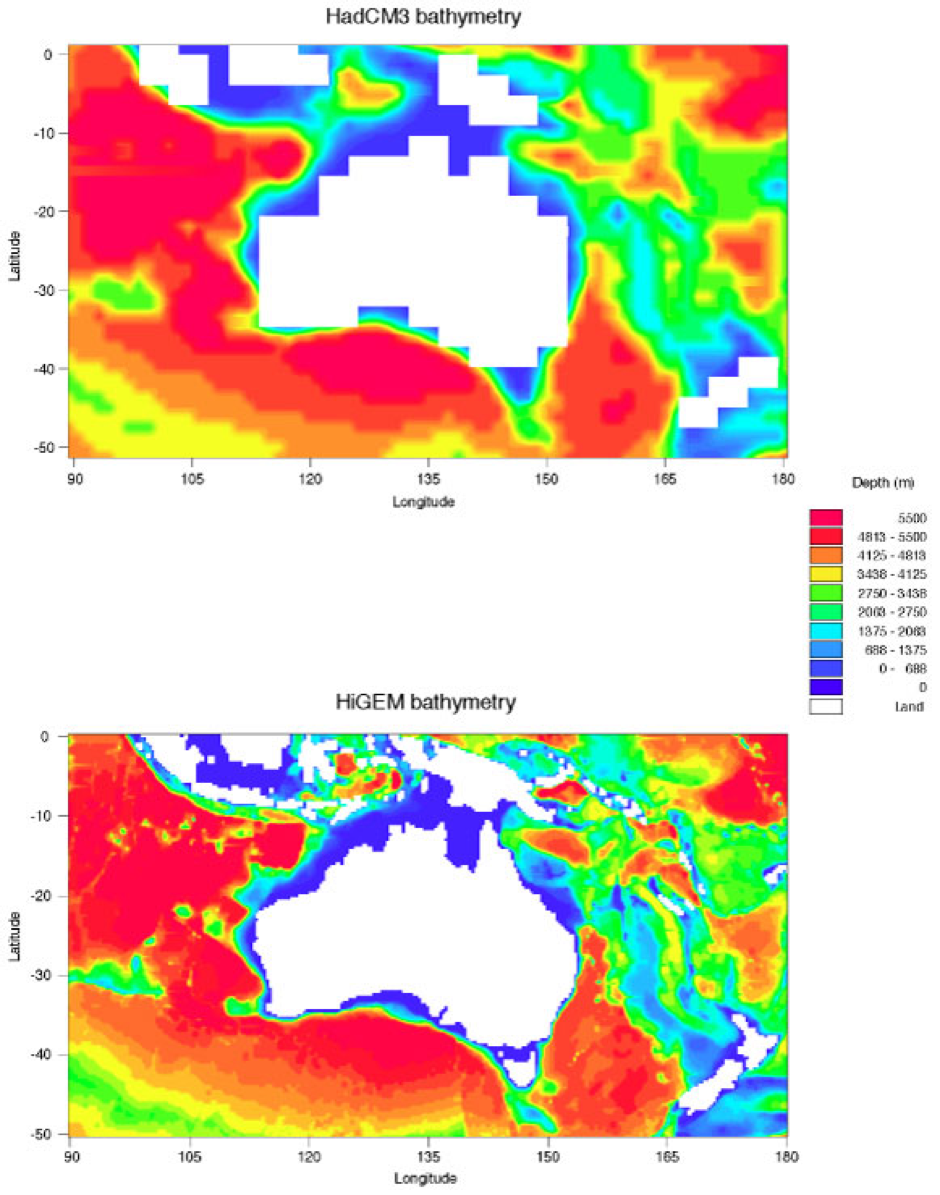High-Resolution Global Environmental Modelling

HiGEM (2004-2006) brings together expertise from NERC, the UK academic community and the Met Office in a concerted UK effort to develop coupled climate models with increased horizontal resolutions. Increasing the horizontal resolution of coupled climate models will allow us to capture climate processes and weather systems in much greater detail.
Over the last three years NERC scientists at NCAS, BAS, CEH, ESSC, NOCS and UEA have developed a significant modelling capability through the development and implementation of the UK’s first high-resolution coupled ocean-atmosphere model (HiGEM) under the UK-HiGEM Programme and the UK-Japan Climate Collaboration (UJCC).
The HiGEM high-resolution coupled climate model is based on the latest climate configuration of the Met Office Hadley Centre Unified Model, HadGEM1, with the horizontal resolution increased to 1.25 x 0.83 degrees in longitude and latitude in the atmosphere and 1/3 x 1/3 degrees in the ocean.

Figure | Snapshot from HiGEM showing clouds (greyscale), surface temperature (colours) and sea-ice (pink)
HiGEM is a world leader in terms of the combined resolution of the coupled system and its capability to produce multi-decadal, stable simulations. It is already providing ground-breaking results in terms of addressing the scale interactions between weather and climate and their effects on the mean climate and major modes of variability, such as El Nino.
At the same time, the UJCC has begun development of even higher resolution models, NUGAM (atmosphere-only) and NUGEM (coupled), capable of exploiting the power of the Earth Simulator. The development of HiGEM and NUGAM/NUGEM has presented some significant scientific and technical challenges with the result that NERC now has a critical mass of experienced modellers capable of working at the cutting edge of climate system modelling.

Figure | HiGEM model bathymetry compared with coarse-resolution HadCM3
To find out more, please visit the HiGEM website.